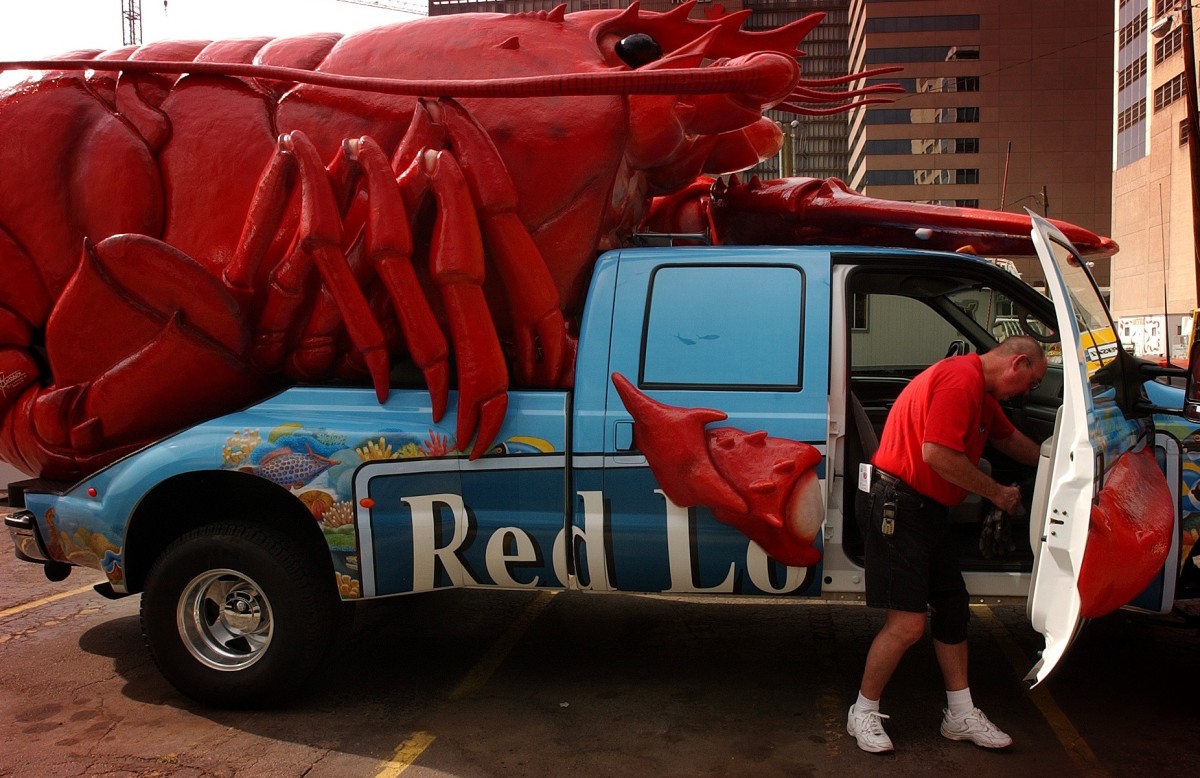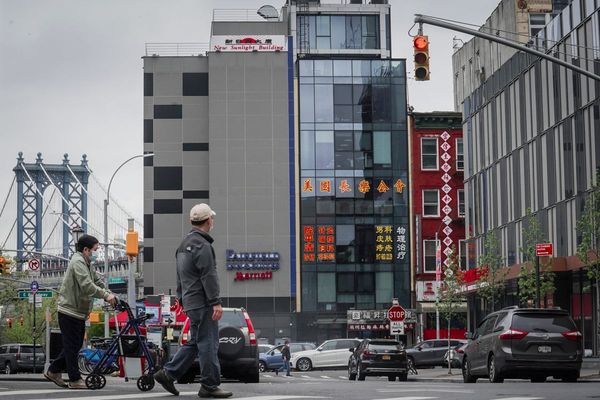
Red Lobster is an iconic American brand. It brought seafood to many parts of the United States where access to things like shrimp, squid rings, and lobster was previously limited. But the casual-dining seafood restaurant chain has fallen on hard times.
Some blame its plunge into bankruptcy on losses it sustained via its all-you-can-eat “Endless Shrimp” campaign, but there’s more to it than that.
More than a decade ago, Red Lobster changed hands several times, going from being part of a publicly traded company to a portfolio company of a private equity firm and then repeating the cycle. In a decade, the restaurant chain closed more than a fifth of its stores, from about 700 to 545.
💰💸 Don’t miss the move: SIGN UP for TheStreet’s FREE Daily newsletter 💰💸
Here’s how Red Lobster slipped in and out of bankruptcy and what it’s doing now.

When did Red Lobster enter bankruptcy?
Red Lobster filed Chapter 11 bankruptcy on May 19, 2024, to restructure and protect itself from creditors. In its bankruptcy filing, Red Lobster listed assets of $358 million and liabilities of $399 million. It had $27 million in cash.
Creditors filed claims amounting to at least $384 million. One of the seafood chain’s largest creditors was Fortress Credit Corp., with $265 million in claims secured by the company's properties. Creditors with unsecured claims had claims totaling $119 million.
During the bankruptcy proceedings, Red Lobster planned an auction — the restaurant chain would go to the highest bidder.
Thai Union had said in January 2024 that it planned to divest its minority investment in the money-losing Red Lobster by the end of the year, citing the effects of falling demand from COVID-19, higher interest rates, and rising material and labor costs, among others. It recorded a $530 million non-cash impairment charge for its whole investment in Red Lobster, which it included in its fourth quarter 2023 earnings.
Why did Red Lobster file bankruptcy?
From an outsider’s point of view, Red Lobster’s “Endless Shrimp” campaign can be blamed.
But losses from the shrimp campaign were likely only in the millions of dollars — not enough to cripple the company’s finances. Aside from COVID-19 and rising material and labor costs, Red Lobster’s sale-leaseback saga was likely a significant factor in its decision to file for bankruptcy.
When Golden Gate Capital purchased Red Lobster, the private equity firm loaded the company with debt as part of its leveraged buyout, paying Darden $2.1 billion in cash. As part of an asset-stripping process, the private equity firm sold the real estate of most of Red Lobster’s restaurants to a real-estate firm.
In July 2014, in a separate transaction that helped finance its leveraged buyout, Golden Gate Capital agreed to sell the property of about 500 locations to American Realty Capital Properties, Inc. (later renamed VEREIT (VER) ) for $1.5 billion.
The transaction was a sale-leaseback, which meant that — after the locations were sold — Golden Gate would then rent the same properties for those Red Lobster restaurants from American Realty. Red Lobster operated about 700 restaurants in 2014.
Just a year later, in 2015, Golden Gate purchased $204 million in Red Lobster properties, and, at the same time, in a partnership with VEREIT, sold $400 million of restaurant real estate.
Instead of just paying property taxes on locations that have no mortgages, Golden Gate would pay for the leases from sales generated by Red Lobster restaurants. And because of the rising prices for commercial and residential property in the past decade, it’s likely that the amount of rent to be paid each year was more than the annual tax payments it would have paid had all of Red Lobster’s properties been kept.

A brief history of Red Lobster’s ownership
Red Lobster has changed hands several times since Bill Darden founded the seafood-focused restaurant in 1968.
In 1970, it was sold to General Mills, which rapidly grew the business by opening of new stores. It was then spun off as part of its restaurant division into Darden Restaurants (DRI) in 1995. Darden Restaurants — which wanted to focus on its Olive Garden chain — put Red Lobster up for sale in 2014, and it was bought out by a San Francisco-based private equity firm, Golden Gate Capital.
Thai Union Group, a seafood company based in Thailand that owns the Chicken of the Sea canned tuna brand, first bought a 25% stake in Red Lobster from Golden Gate for $575 million in 2016, and with an investment group named the Seafood Alliance — which counted restaurant executives with decades of experience among its leaders — purchased Golden Gate’s remaining stake in 2020 for an undisclosed amount.
Thai Union is better known for its seafood products than for operating restaurants, but since it was a major supplier of shrimp, fish, and other seafood to Red Lobster for many years, and its investment partners included experienced restaurant executives, an expansion into restaurant operations seemed like a natural fit.
In 2021, Thai Union sought financing assistance from Fortress Credit Corp., a provider of private loans.
When & how did Red Lobster emerge from bankruptcy? Who owns it now?
RL Investors emerged as Red Lobster’s entity and exited bankruptcy protection on Sept. 16, 2024. Fortress Credit, which was owed $265 million in claims secured by Red Lobster’s property, took over Red Lobster. Reports say that Fortress was the lone bidder of $375 million — comprising $275 million in debt and $100 million in debtor-in-possession financing.
Red Lobster’s new owner, RL Investor Holdings, an LLC (limited liability company), was created by funds managed by affiliates of Fortress Credit’s parent, investment management company Fortress Investment Group LLC, and co-investors TCW Private Credit (the private credit unit of TCW Group, a global asset management company) and Blue Torch Capital, a direct lender.
More on bankruptcy:
- The most noteworthy business bankruptcies of 2024 (so far)
- Rite Aid’s Bankruptcy explained: Causes & timeline
- The 5 most startling retailer bankruptcies since 2020

What is Red Lobster doing after emerging from bankruptcy?
Red Lobster underwent a reorganization and devised a plan to boost revenue, bring back former customers, and lure in new ones as well. A new CEO was hired, and new owners committed more than $60 million in new funding.
When it emerged from bankruptcy, Red Lobster operated 545 restaurant locations across 44 U.S. states and four Canadian provinces, and it had 30,000 employees. (Still, that's down from about 700 a decade earlier.)
Damola Adamolekun, a 35-year-old Harvard Business School graduate, became CEO after the chain emerged from bankruptcy. Prior to Red Lobster, he was CEO of P.F. Chang’s, an Asian-fusion-themed restaurant that is also owned by a private equity firm, for about five years. P.F.Chang has reportedly been profitable under Adamolekun, and Red Lobster aims to replicate this money-making success under him.
While Fortress manages many companies across different industries, it does have experience in the restaurant business and counts restaurant operators in its portfolio.
Its Fortress-backed SPB Hospitality operates and franchises full-service dining restaurants such as steakhouses and restaurant-breweries. For example, Fortress said that in 2020, SPB Hospitality purchased Craftworks Holdings out of bankruptcy, taking over the management of nine restaurant chains, including Logan’s Roadhouse and Old Chicago Pizza & Taproom.
Adamolekun, who remembers enjoying meals at Red Lobster with his family in his youth, said in an interview with Today that a revamp in the restaurant chain’s downsized menu included adding new items and bringing back a popular item — hush puppies.
Still, there’s one item Adamolekun surely won’t bring back anytime soon. Likely gone forever are the days of all-you-can-eat shrimp.
Related: Veteran fund manager sees world of pain coming for stocks







